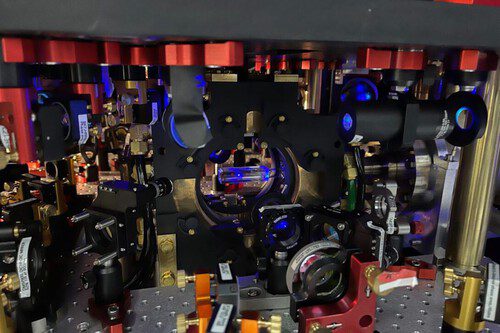Quantum physics requires high-precision sensing techniques in order to delve deeper into the microscopic properties of materials, writes Phys.org. Here are the latest reports on quantum processors that have emerged recently.
A new analog quantum processor is announced
Recently, analog quantum processors have emerged, and among them, quantum-gas microscopes have proven to be powerful tools for understanding quantum systems at the atomic level.
These devices produce images of quantum gases with very high resolution, enabling the detection of individual atoms.
Researchers from ICFO in Barcelona, Spain, including Sandra Buob, Jonatan Höschele, Dr. Vasiliy Makhalov, and Dr. Antonio Rubio-Abadal, under the leadership of ICREA Professor Leticia Tarruell, have successfully developed a quantum-gas microscope named QUIONE after the Greek goddess of snow.
This microscope is the only one in the world capable of imaging individual atoms of strontium quantum gases and the first of its kind in Spain.
The team’s research is published in the journal PRX Quantum.
Beyond the impactful images in which individual atoms can be distinguished, the goal of QUIONE is quantum simulation.
As Prof. Tarruell explains, “Quantum simulation can be used to boil down very complicated systems into simpler models to understand the open questions that current computers cannot answer, such as why some materials conduct electricity without any losses even at relatively high temperatures.”
This experiment is unique because the team has brought the strontium gas to the quantum regime. They placed it in an optical lattice where the atoms could interact by collisions, and then applied single atom imaging techniques.
These three ingredients make ICFO’s strontium quantum-gas microscope special.
In recent years, strontium has gained popularity in the fields of quantum computing and quantum simulation due to its unique properties.
For instance, a group of strontium atoms can be used as an atomic quantum processor, capable of solving problems beyond the capacity of current classical computers.
ICFO researchers recognized the potential of strontium as a tool for quantum simulation, leading them to develop their own quantum-gas microscope, which they named QUIONE.
“It is a very exciting moment for quantum simulation,” said Prof. Tarruell. “Now that we have added strontium to the list of available quantum-gas microscopes, we might be able to simulate more complex and exotic materials soon. Then, new phases of matter are expected to arise. And we also expect to obtain much more computational power to use these machines as analog quantum computers.”











Leave a Reply